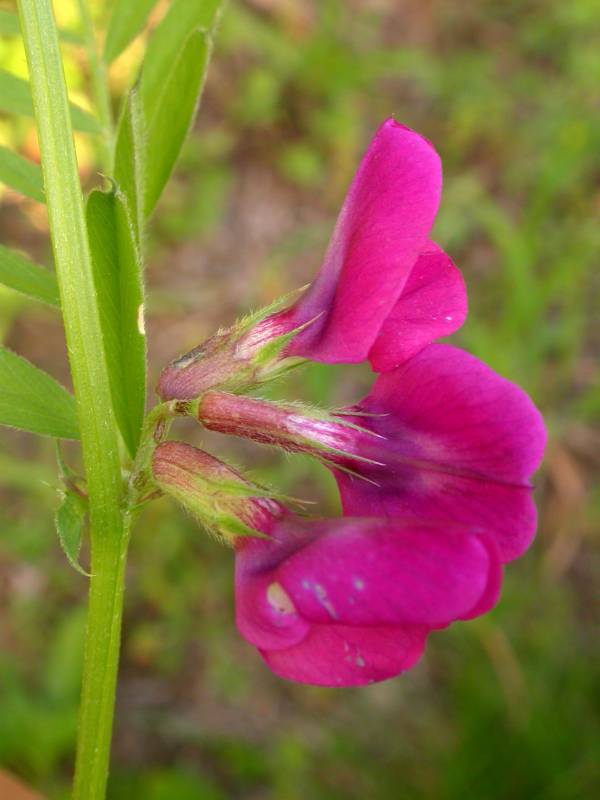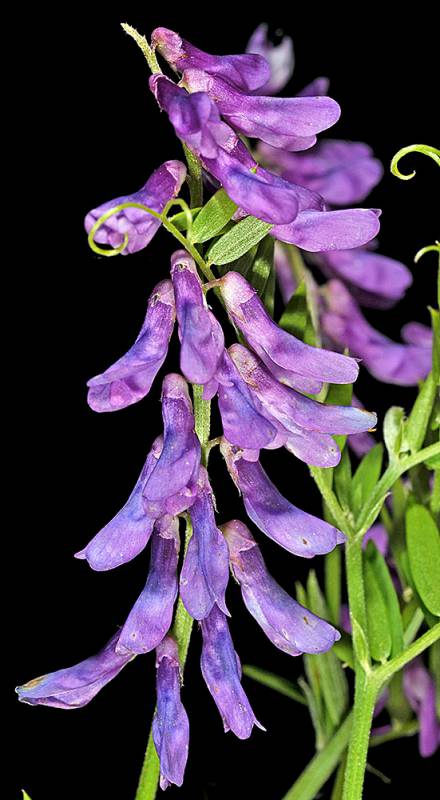Vicia sativa
Vicia cracca
tare, common vetch
tufted vetch, bird vetch
Leaves pinnate;
leaflets 10-14, linear to obovate-oblanceolate, 1.5-3 cm. long, rounded or with a shallow notch, and with a needle-like tip;
stipules 3-8 mm. long, deeply toothed or saggitate;
tendrils well-developed, branched.
Leaves pinnate, 6-12 cm. long, with well-developed tendrils;
leaflets 12-18, linear, 1.5-3 cm. long, with a needle-like tip;
stipules toothed to entire, 7-15 mm. long.
Flowers pea-like, 1-3 in the leaf axils, short-pedunculate, 15-25 mm. long;
calyx over half the length of the corolla, the 5 teeth narrowly awl-shaped, equal, usually longer than the tube;
banner erect, orchid to purplish;
wings often red;
style densely bearded at the tip.
Inflorescence of axillary racemes, these longer than the peduncles and exceeding the leaves;
flowers pea-like, 20-70. closely packed, 10-15 mm. long, pendulous, violet-purple;
calyx half as long as the corolla, the tube 2-3 mm. long, oblique and slightly bulged, the upper 2 lobes very short, triangular, the lower 3 much longer;
style densely bearded at the tip.
Pod 3-7 cm. long.
Pod 1.5-2 cm. long and 6-10 mm. broad, flattened, several-seeded.
Vicia sativa
Vicia cracca
- Local floras:
BC,
CA,
OR,
WA
- Local Web sites:
CalFlora,
CalPhotos,
Flora NW,
PNW Herbaria,
Turner Photog.
WildflowerSearch
iNaturalist (observations)
USDA Plants Database
- LBJ Wildflower Center
- SEINet
- Plants of the World Online
- Encyclopedia of Life
- Wikipedia
- Google Image Search
- Local floras:
BC,
CA,
OR,
WA
- Local Web sites:
CalFlora,
CalPhotos,
Flora NW,
PNW Herbaria
WildflowerSearch
iNaturalist (observations)
USDA Plants Database
- LBJ Wildflower Center
- SEINet
- Plants of the World Online
- Encyclopedia of Life
- Wikipedia
- Google Image Search



